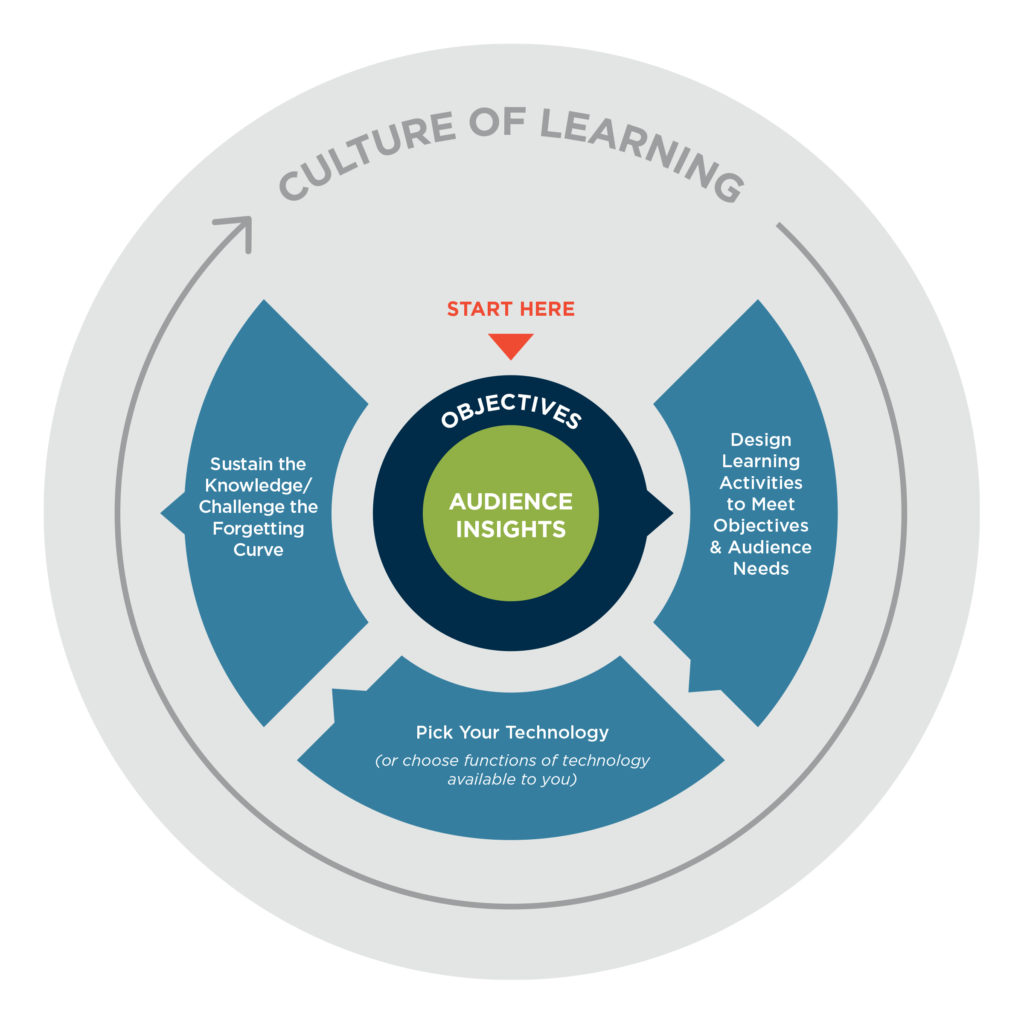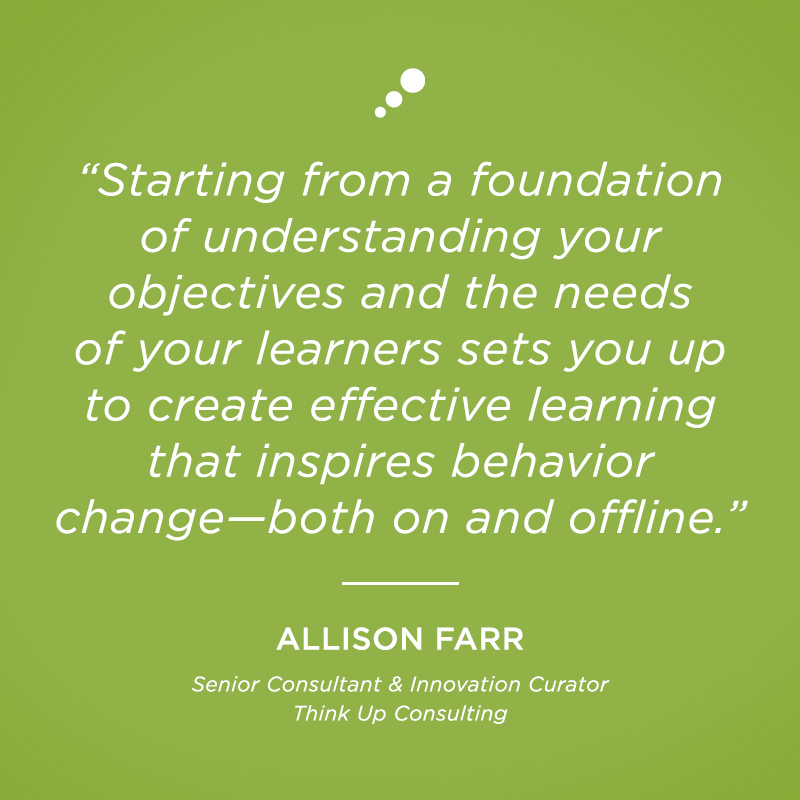For the past few months, we’ve seen companies quickly do their best to shift their training, events, and other previously in-person activities to virtual platforms. Some have been successful, but others have likely realized what we at Think Up have always known—virtual learning is more than just loading a video recording of a facilitator onto an online platform. Virtual learning takes careful planning and objectives-focused design.
As things start to open up and a “new normal” appears to be within our reach, virtual learning remains a relevant and necessary result of the COVID-19 crisis.
Things have changed, but the fundamentals of virtual learning remain the same:
- Start with objectives
- Know your audience
- Design learning activities to meet objectives
- Pick your technology (or choose functions of technology available to you)
- Sustain the knowledge/challenge the forgetting curve

We’re going to focus on what should be the starting point for any effective training, starting with objectives and knowing your audience. These two things create a strong foundation, on which everything else builds.
START WITH OBJECTIVES
We believe all learning must first start with clear and measurable objectives—virtual learning is no exception. Objectives should define what you want learners to be able to do after completing your training.
Your objectives should be your training’s north star. Everything you do within your learning experience should ladder up to one or more of your objectives.
As we move towards a new normal where travel may remain infrequent, virtual learning experiences are likely here to stay. Perhaps you used to have a 3-day, onsite, immersive experience to introduce new leaders to your company. Your objectives include orienting these leaders to your company, providing them with a high-level overview of their roles and responsibilities, introducing them to the company’s engaging culture, and inviting them to be part of the team.
By grounding yourself in your objectives, you can use these as a lens to guide the planning around meeting those objectives in a virtual environment. Your objectives should drive the experience and the mode of delivery, not the other way around.
KNOW YOUR AUDIENCE
I’ve often joined an online learning event, excited about the topic and ready to learn more—only to find myself unengaged and disappointed. Learning in a virtual environment is not easy—and creating an experience that engages learners requires some serious planning.
Before designing learning, consider the needs of the learner. Beyond what you want the learners to know or be able to do by the end of your training, put yourself in their shoes to understand where they are coming from. This is especially important for virtual learning. How can we change behavior if we don’t ensure learners will be receptive to the training?
Some of Maslow’s Hierarchy of Needs provides a useful framework when considering what it will feel like for learners participating in your virtual experience.
First, can your learners meet their Physiological Needs while participating? Right now, many learners are at home, juggling family responsibilities and work. If you are delivering 6 or 8 hours of critical information, plan for extended breaks so learners can attend to life needs. Even in typical learning environments, taking breaks helps learners absorb information more effectively. In a study from the University of Illinois, participants who took breaks during a 50-minute tasks performed better than those who worked straight through.
Also consider Safety Needs and Esteem when thinking about how learners will be part of the training. Allow for learners to participate in a variety of ways, so they can do so as they feel most comfortable. Some may be fine with being on camera and speaking to the group, while others may prefer to communicate by typing in the chat. While participation beyond just attendance is important, the virtual learning platform you use should have a variety of ways for learners to do so.
CONCLUSION
Starting from a foundation of understanding your objectives and the needs of your learners sets you up to create effective learning that inspires behavior change—both on and offline.
At Think Up, we have developed thousands of hours of high impact, virtual learning that starts with objectives and is centered on learner experience. In upcoming articles, we will describe how we build on this foundation to drive results in the new normal and beyond.
Reflections from Allison Farr, Innovation Curator, Think Up Consulting.



